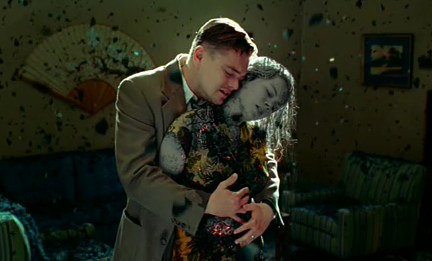
When you go to see a movie that seems to promise a mix of “One Flew Over the Cuckoo’s Nest” and “Escape from Alcatraz,” you expect a fair amount of twists and turns. But there are almost too many in acclaimed director Martin Scorsese’s newest creation, “Shutter Island.”
The first hour and a half is so layered with visual tricks, creepy insane asylum visuals and subterfuge that it borders on overwhelming. Slowly — very slowly — but surely, though, the layers are peeled back and viewers are treated to a solid plot and some of the creepiest cinematography thus far this year.
The setup: Two federal marshals, circa 1954, investigate the disappearance of a patient from a mental institution on an Alcatraz-like island off of the coast of Massachusetts. Teddy Daniels, the lead detective, played gamely by Leonardo DiCaprio, comes to the titular island not only to solve the mystery, but to blow the lid off what he thinks is a much larger conspiracy with the facility, its patients and personnel.
Joining DiCaprio are his marshal partner, played by Mark Ruffalo and a disturbing, yet cunning, group of patients and psychologists who keep the island machinations going.
The movie starts off simple enough, but from the first 10 minutes on, it throws in almost every element from the thriller playbook. Tight editing, dark visuals, ghosts, visions, dream sequences, bad weather and psychological torment all make a cameo. It’s almost as if Scorsese wrote the ending first and then tried to scatter as many of the puzzle pieces as he could throughout the film.
This film isn’t his best work, but it still manages to maintain an element of intrigue to get you through its 138-minute runtime. It can be slow. It can be confusing. It can be tiring. But the end makes the whole thing worth it or at least gives the movie enough rationale to justify sitting through it.
We can’t spoil it, not even a tiny bit, because any advance knowledge, even if you figure out the twist by the end of the movie, ruins the fun. The big “a ha!” moment is too important and integral to the enjoyment of this film. In fact, it’s a safe assumption that “Shutter Island” is one of those movies that lives or dies by its twist.
This magic trick is helped by an ending revelation that will have you trying to go back and put the puzzle pieces together long after you leave the theater. You may think you know what’s going on, but some part of the intricate solution will throw you for a loop and tickle your brain.
Even if you don’t think the end justifies the means, watching “Shutter Island” is still a visual feat for the eyes. The cinematography is top-notch. The film gets plenty of mileage out of its setting, with a landscape as foggy as a patient’s memory and interiors as dark as their soul. It’s a creepy setting, and the art direction mixes its ’50s feel with a timeless quality. The facilities are a neat mix of sterile steel and rustic architecture, and some late cliff action is a scenic treat.
In the end, Scorsese’s drama makes you go nearly as mad as the patients on the island, but it pulls you back from the brink of insanity just before it can consume you. Give it a shot. It may not be as Oscar-worthy as one would expect from the pedigree, but a few mind games are worth the trip.



















